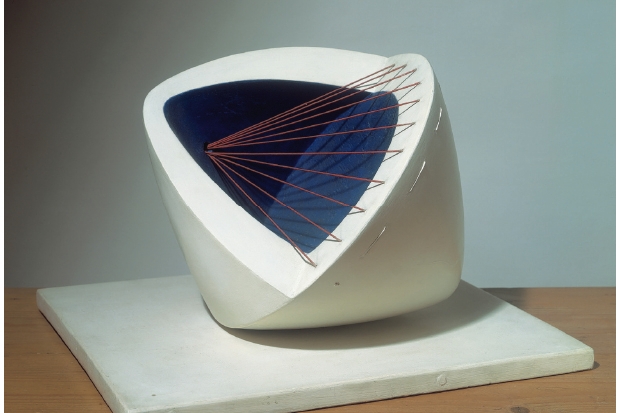In the last two decades of her life, Barbara Hepworth was a big figure in the world of art. A 21-foot bronze of hers stands outside the UN headquarters in New York, emblematic of her friendship with secretary-general Dag Hammarskjöld — a Hepworth collector — and of her international fame.
This was how a modern monument looked half a century ago: abstract but organic, romantic but starkly simplified. Since Hepworth’s death, however, her status has become less clear: was she a towering giant of modern sculpture or relatively minor, a slightly dreary relic of post-war Britain? Barbara Hepworth: Sculpture for a Modern World at Tate Britain does not quite supply the answer. But it does throw some revealing sidelights on her art and career.
Since the dawn of the modern age — when sculptures began to come out of the niche, off the altar and down from the plinth — there has been a nagging question: where on earth to put the stuff? The exhibition reveals how concerned Hepworth herself was with this problem. On show are a series of collages in which she pasted photographs of small pieces into various spots: in woodland, in the garden of a modernist house.
With a Hepworth the surroundings are critical (which is why a verdict on her is hard to reach). They need to be natural, but not too close to her sources of inspiration. Once, having climbed down the cliffs at Zennor in Cornwall, I came across a remote cove. It was filled with large brown boulders, hollowed and rounded by the sea. In other words, I had stumbled on a whole beach of natural Barbara Hepworths. But putting a real sculpture by the artist there would be like hanging Constable’s ‘Hay Wain’ on the towpath at Flatford.
The truth is, I think, that big Hepworth pieces are at their best — as they are in the garden of her old studio in St Ives — when seen outdoors amid greenery. But they harmonise much more awkwardly with bricks and concrete. Her ‘Winged Figure’ (1963) clings to the wall of John Lewis on Oxford Street like a giant bat, accidentally crash-landed on the shop.
The last room of the Tate exhibition tackles the question of Hepworth’s difficult relationship with architecture (for which she firmly blamed the architects). Boldly, but eccentrically, the curators have reconstructed part of the exhibition from 1965 at the Kröller-Müller Museum in the central Netherlands. This contains a group of works by Hepworth arranged around a pavilion by the Dutch architect Gerrit Rietveld.
This, a bus shelter-like structure in a material resembling breeze-block, is one of Rietveld’s least charming buildings. What makes the whole ensemble work at the Kröller-Müller — much of which is still in situ — is the surrounding grass and leaves. These are represented inadequately at Tate Britain by a wall-sized photograph of trees.
Such are the limitations of museum displays. Understandably, the exhibition devotes more attention to her earlier, smaller-scale work. It begins by placing Hepworth’s earliest efforts next to those of contemporaries — and seniors — such as her first husband John Skeaping, Henry Moore and Eric Gill. At this stage, she was a brilliant follower, whether of Epstein in ‘Infant’ (1929), a sleekly polished bundle of energy, or of Brancusi in the rounded ‘Doves (Group)’ (1927). Next is a room devoted to Hepworth and her second husband, Ben Nicholson. In the 1930s their development as artists was symbiotic: her profile turns up again and again in his pictures.
His impact on her art — and life — can be seen in ‘Three Forms’ (1935), and in more than one way. The trio of white spherical and egg-like ovoid shapes was made a year after she gave birth to triplets. Even when the final result appeared completely non-figurative, nature — whether the human body or the Cornish landscape — continued to be her starting-point.
The earlier galleries are crowded with small, highly polished sculptures. But one near the end contains some larger works carved in the mid-1950s from a hardwood called guarea. These handsome objects have enough space to expand.
They are fine investigations of one of Hepworth’s special subjects: the inside of things. Externally, ‘Corinthos’ (1954–5), for example, is as mahogany-coloured and smooth as one of the rocks on that beach; but the interior is scooped out and whitened to resemble a cavern in a marble mountain.
With Hepworth — as with her contemporary Henry Moore — it is the often large, late works that really make you stop and stare. Understandably, few are on show at Tate Britain. This exhibition pursues some intriguing byways, but it doesn’t quite answer the big question: how good was she really?






Comments